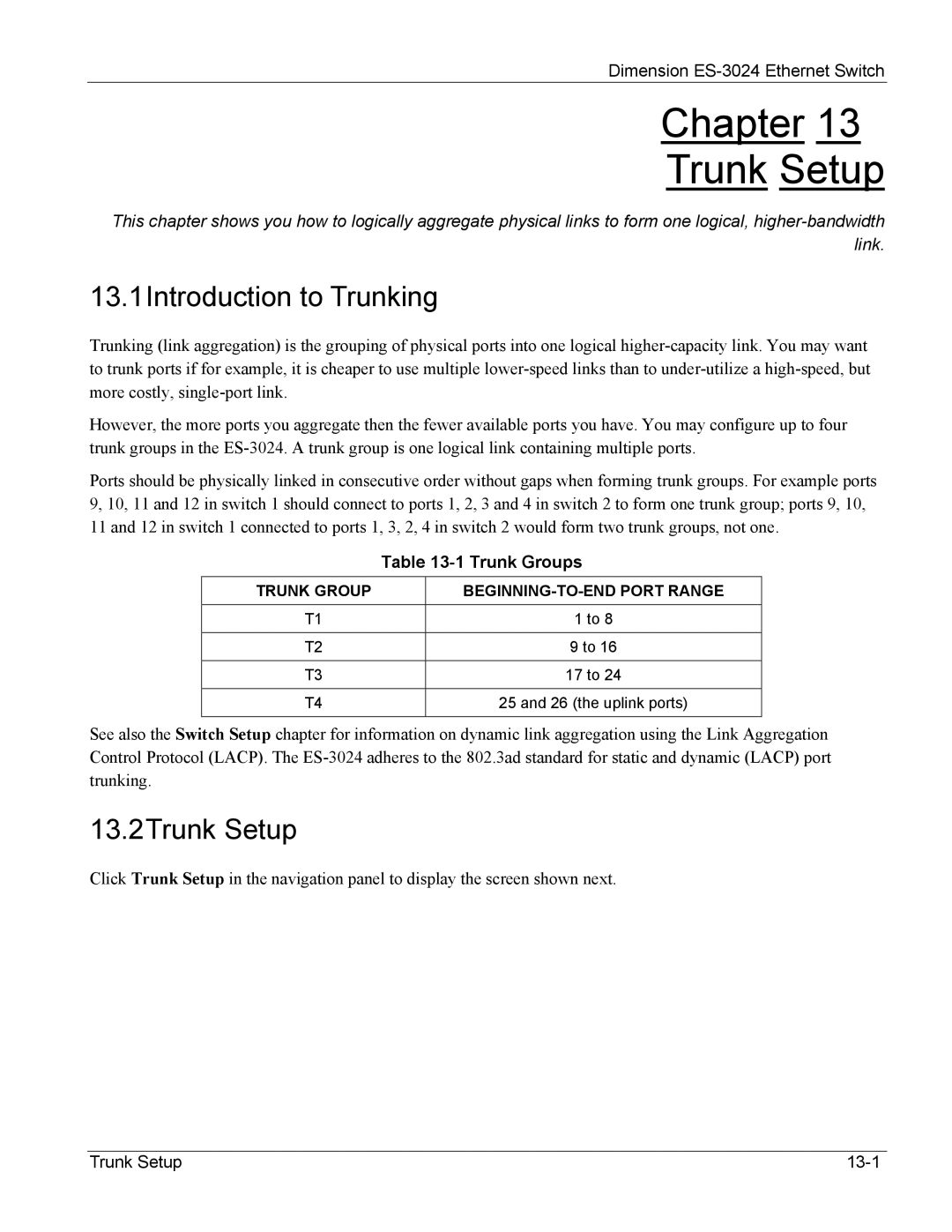Dimension
Chapter 13
Trunk Setup
This chapter shows you how to logically aggregate physical links to form one logical,
13.1Introduction to Trunking
Trunking (link aggregation) is the grouping of physical ports into one logical
However, the more ports you aggregate then the fewer available ports you have. You may configure up to four trunk groups in the
Ports should be physically linked in consecutive order without gaps when forming trunk groups. For example ports 9, 10, 11 and 12 in switch 1 should connect to ports 1, 2, 3 and 4 in switch 2 to form one trunk group; ports 9, 10, 11 and 12 in switch 1 connected to ports 1, 3, 2, 4 in switch 2 would form two trunk groups, not one.
| Table | |
TRUNK GROUP |
| |
|
|
|
T1 |
| 1 to 8 |
|
|
|
T2 |
| 9 to 16 |
|
|
|
T3 |
| 17 to 24 |
|
|
|
T4 |
| 25 and 26 (the uplink ports) |
|
|
|
See also the Switch Setup chapter for information on dynamic link aggregation using the Link Aggregation Control Protocol (LACP). The
13.2Trunk Setup
Click Trunk Setup in the navigation panel to display the screen shown next.
Trunk Setup |
